Alfred Shaheen, often hailed as the pioneer of the aloha shirt, revolutionized Hawaiian fashion and established a legacy that continues to resonate today. Born into a family of garment industry entrepreneurs, Shaheen’s roots in textiles were deep. His journey began in the 1940s when he took over his family’s custom garment business in Hawaii. However, it was Shaheen’s vision of creating a vertically integrated textile business that set him apart. By designing, printing, and manufacturing garments all in one place, he was able to innovate and produce bold, vibrant designs that captured the spirit of the islands. His work not only made the aloha shirt iconic but also positioned Hawaii as a significant player in the fashion world.
Throughout the mid-20th century, Shaheen’s designs became synonymous with the tropical allure of Hawaii. Drawing inspiration from diverse cultures, including Tahiti, Samoa, and Japan, his team created fabrics that blended traditional motifs with modern artistry. His signature prints, such as the Pua Lani Pareau and Tiare Tapa, were worn by everyone from everyday people to celebrities like Elvis Presley, further cementing his brand’s global appeal. Shaheen’s fabrics graced the pages of fashion magazines and were sold in high-end department stores like Bergdorf Goodman and Bloomingdale’s, showcasing the crossover between Hawaiian resort wear and mainstream fashion.
What truly set Shaheen apart was his innovation in textile production. From developing durable, vibrant metallic dyes to engineering prints that could withstand tropical climates, Shaheen was always at the forefront of garment technology. His influence extended beyond clothing, as he diversified his company to include footwear, drapery, and even fragrance. With boutiques across the United States and collaborations with renowned brands, Shaheen’s impact on the fashion industry remains unmatched, making his vintage pieces highly sought after by collectors and fashion enthusiasts alike.
60s Fashion in London’s King Street
How to tell if Alfred Shaheen is vintage from the logo
Alfred Shaheen is known for his bold, tropical prints and timeless designs that were synonymous with mid-century Hawaiian fashion. His brand’s evolution is reflected in the changes made to the logo over the decades. Each logo represents a shift in both the design approach and era, making it an excellent point of reference for identifying vintage Alfred Shaheen clothing. Here’s how the logo has changed over time.
1950s Alfred Shaheen logo
- This early logo features a minimalist, sans-serif font that reflects the straightforward aesthetic of the 1950s.
- The “ALFRED SHAHEEN” text is all in uppercase, making it simple and easy to read.
- The absence of any additional design elements suggests the focus was on the name itself during this era.
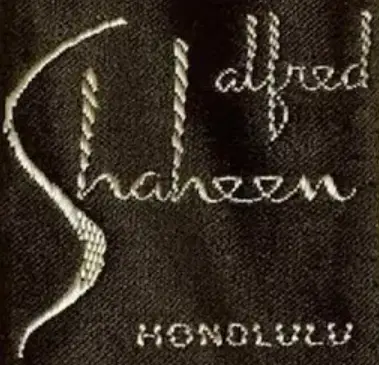
1950s Alfred Shaheen logo
1950s to 1970s Alfred Shaheen logo
- This version introduces a more cursive, stylized font with “alfred” in lowercase and “Shaheen” in a much larger, flowing script.
- The inclusion of a small trademark symbol next to the name marks an increase in brand recognition.
- This era reflects a more artistic and bold visual identity as the brand grew in prominence.

1950s to 1970s Alfred Shaheen logo
1960s to 1980s Alfred Shaheen logo
- The logo during this period features a more dramatic cursive “Shaheen” with the word “alfred” appearing above in a smaller font.
- There is a stylized pattern incorporated into the logo, often with the use of textures or colors that represent Alfred Shaheen’s Hawaiian-inspired designs.
- The “Shaheen” text is bold and elongated, reflecting the brand’s growing presence in the fashion world.

1960s to 1980s Alfred Shaheen logo
2010s Alfred Shaheen logo
- This modern iteration of the logo returns to a cleaner, more minimalistic design.
- The font is still cursive, but more refined and with less flourish compared to earlier logos.
- The logo reflects a nod to the brand’s legacy, keeping the iconic “Shaheen” stylized font, but streamlining it for modern use.
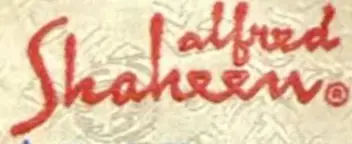
2010s Alfred Shaheen logo
How to tell if Alfred Shaheen is vintage from the tags
Alfred Shaheen, known for his iconic Hawaiian shirts and resort wear, evolved his brand over several decades, resulting in distinctive changes to his garment tags. These changes reflect both the growth of his brand and the fashion trends of each era. From the bold and intricate designs of the 1950s to more simplified layouts in the 2010s, the tags offer insight into the time period each garment was produced. Below is a breakdown of the various tags used by Alfred Shaheen through the decades.
Having difficulty identifying vintage tags or labels? Submit a picture on our vintage tag identification page, and we’ll assist you!
1950s vintage Alfred Shaheen tags
- Tags often include the brand name “Alfred Shaheen” in elegant, cursive lettering.
- Emphasizes handmade craftsmanship, often featuring text like “Hand Printed” or “Hand Made in Hawaii.”
- The design may include a small icon or emblem, such as a ship or crown, highlighting the brand’s luxurious appeal.
- Tags may also specify the local origin with references to “Honolulu” or “Hawaii.”
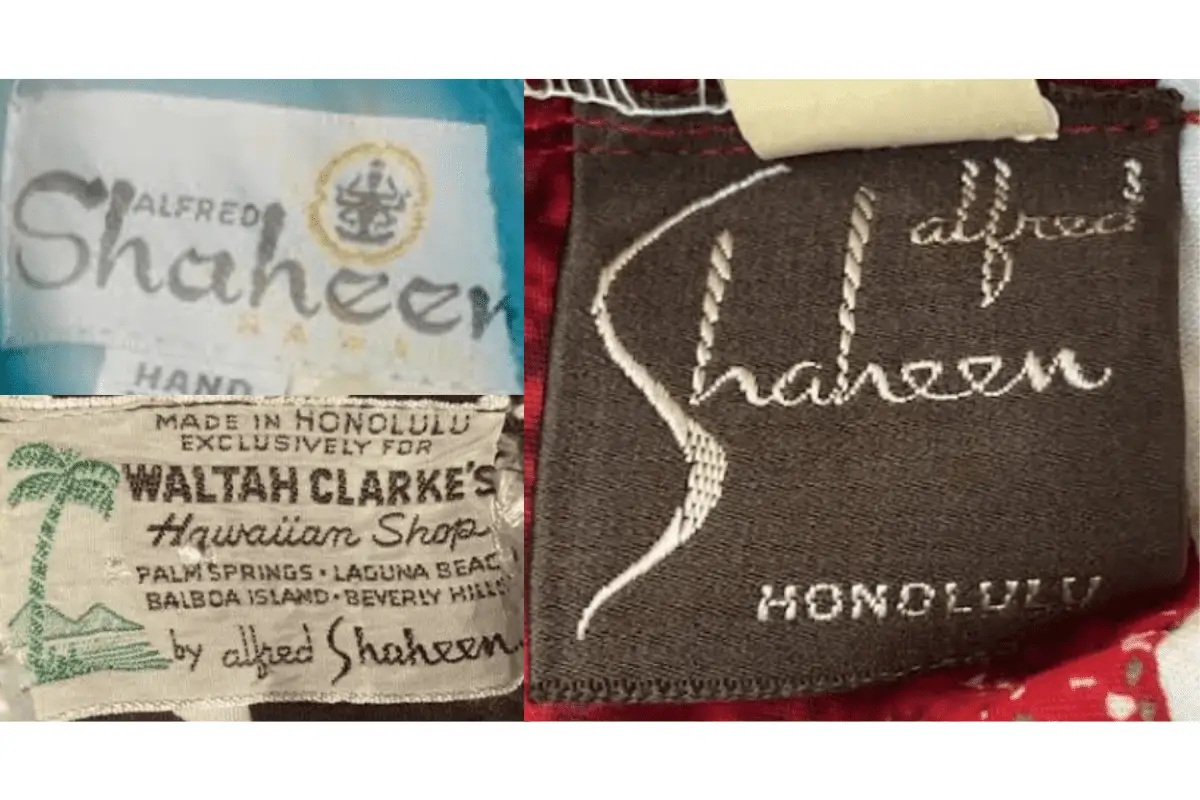
1950s Alfred Shaheen tags
1960s vintage Alfred Shaheen tags
- Tag designs continue to showcase the “Alfred Shaheen” name in cursive.
- Commonly feature the tagline “The Master Printer,” emphasizing Shaheen’s expertise in fabric printing.
- Tags sometimes include additional information about the fabric, such as “Hand Printed in Hawaii” or other details about the garment’s authenticity.
- Occasionally, tags will reference “California” alongside “Hawaii,” reflecting Shaheen’s growing market presence.

1960s Alfred Shaheen tags
1970s vintage Alfred Shaheen tags
- The brand name is still predominantly displayed in bold cursive, often with a classic aesthetic.
- Emphasis on location, with “California” and “Hawaii” typically appearing together.
- The “Master Printer” tagline is still present, often in smaller print.
- Tags might include references to exclusive collaborations or special collections, such as limited editions.
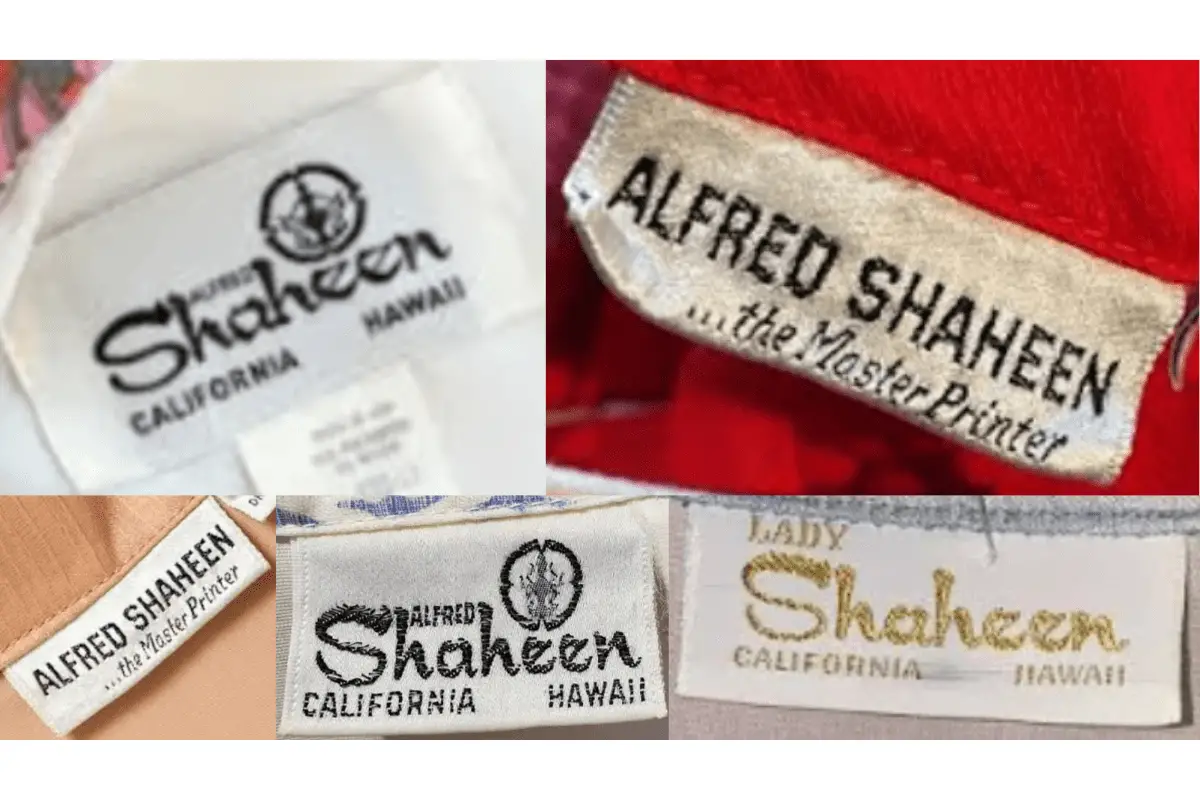
1970s Alfred Shaheen tags
1980s vintage Alfred Shaheen tags
- Tag styles start to modernize, featuring simpler fonts, but still maintain the “Alfred Shaheen” branding in cursive.
- The phrase “Master Printer” is still used on many pieces, reinforcing the brand’s heritage in fabric design.
- Location references, like “California” and “Hawaii,” are still prominent on tags, often appearing side by side.
- Some tags reflect collaborations, such as “Waltah Clarke’s Hawaiian Shop,” highlighting the exclusivity of some collections.
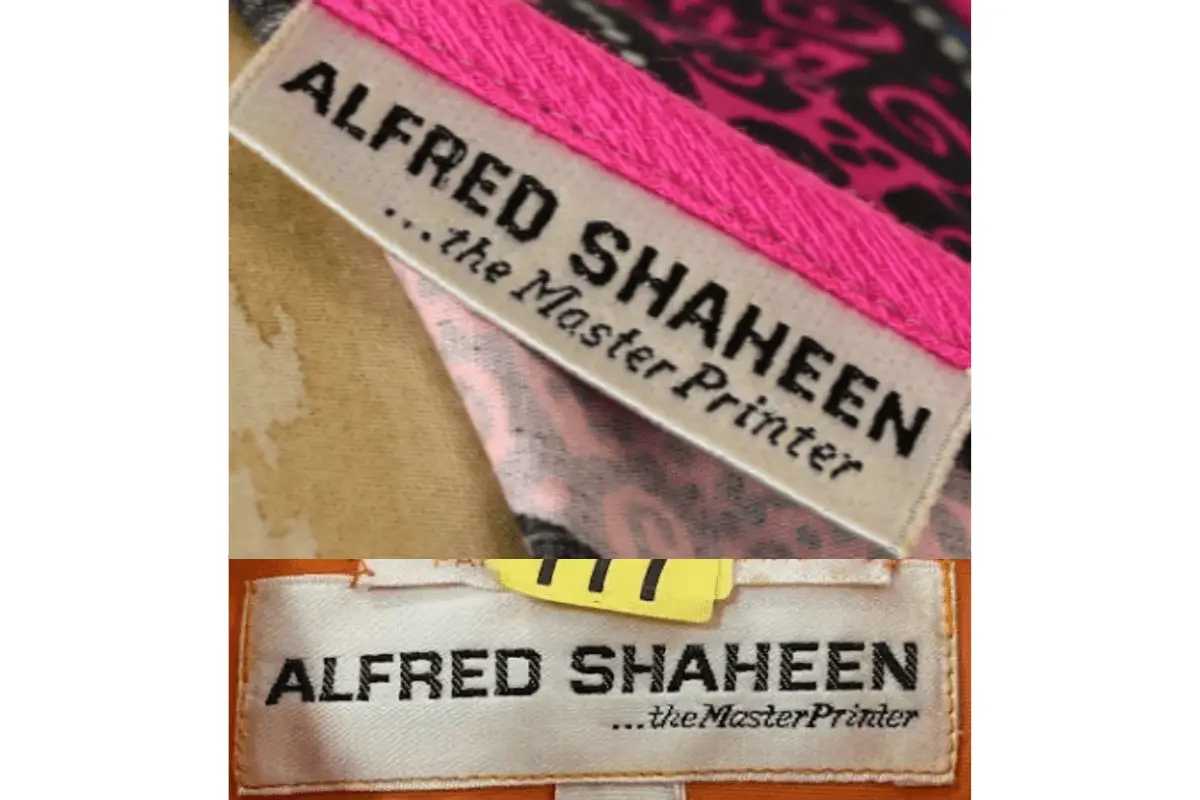
1980s Alfred Shaheen tags
2010s vintage Alfred Shaheen tags
- Tags from this era are sleek and modern, often featuring a more minimalistic design.
- Collaboration with Reyn Spooner is prominently showcased on tags, with “By Reyn Spooner” beneath the Alfred Shaheen logo.
- The classic “Alfred Shaheen” cursive font is retained, keeping the brand’s visual identity consistent despite modernization.
- Tags often indicate limited edition or special edition collections, further emphasizing the rarity of some garments.
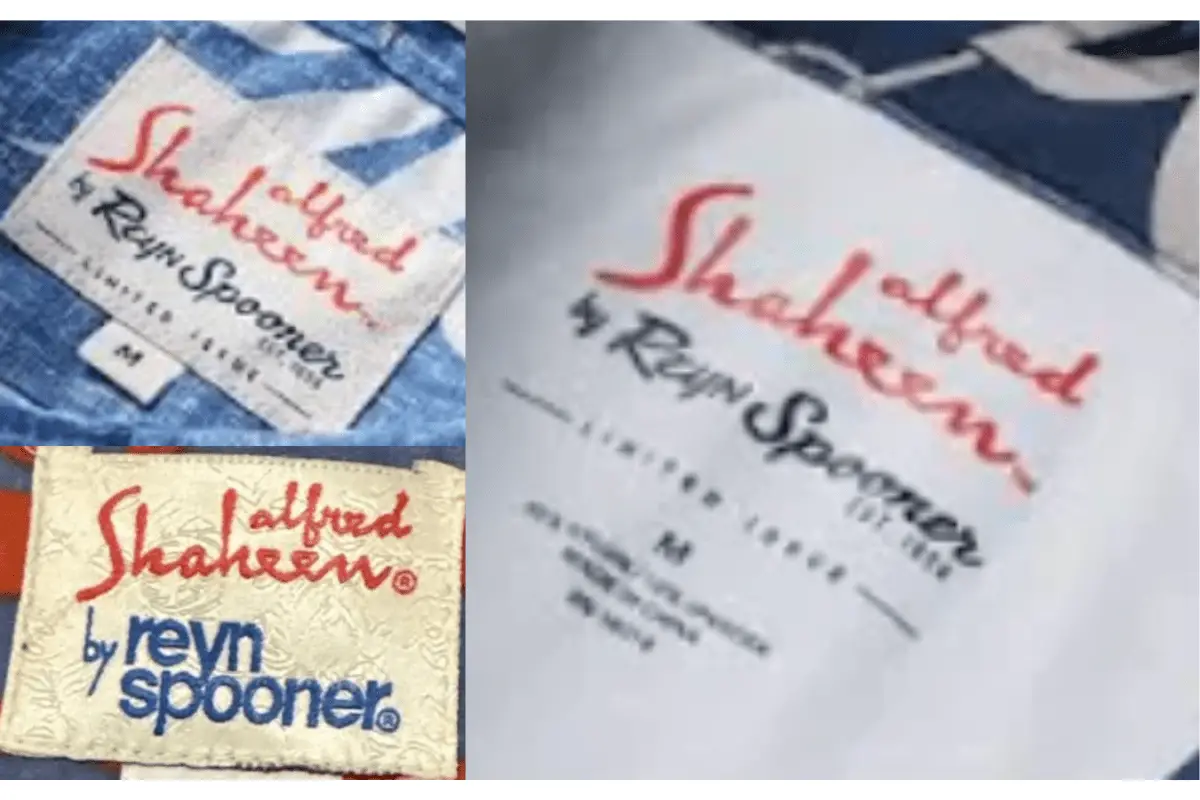
2010s Alfred Shaheen tags



